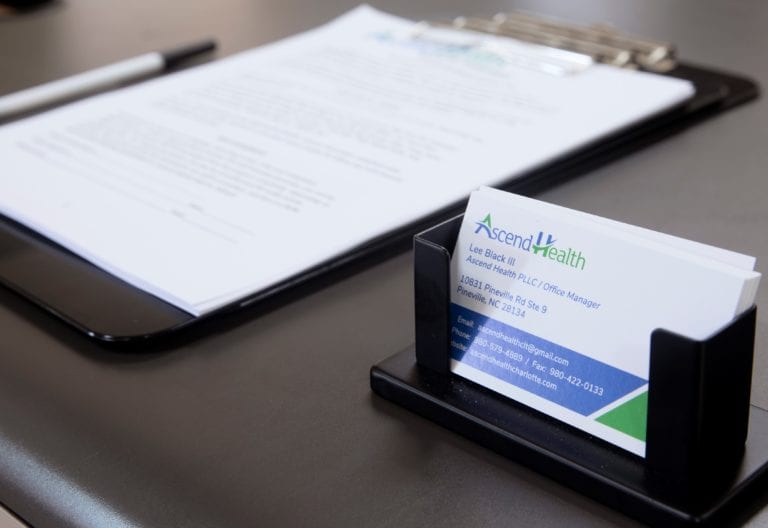You’ve completed detox or inpatient rehab. Now you’re ready to take the next step toward sustained recovery. A veteran opioid treatment program offers the outpatient structure you need to maintain progress, combining medication-assisted treatment and support services tailored to your experiences as a service member. With options like Suboxone maintenance or monthly Sublocade injections, individualized therapy plans, and virtual care, you can continue healing on your terms.
Backed by evidence-based practices, these programs emphasize relapse prevention strategies proven to enhance long-term outcomes [1]. They recognize the unique challenges veterans face—from co-occurring mental health conditions to the transition to civilian life—and deliver comprehensive care that addresses the whole person. In this guide, you’ll discover how the outpatient continuum works, explore medication options and aftercare therapies, navigate VA benefits and funding, and build effective coping strategies. By mapping out each stage, you’ll gain clarity on how to integrate treatment into your daily routine, ensuring you have the support necessary for lasting recovery.
Let’s dive into the key components of your recovery journey and outline practical steps you can take right now.
Understand the program basics
What is the veteran opioid treatment program?
The veteran opioid treatment program, sometimes called the Substance Use Disorder Treatment Program for veterans, is an outpatient model focused on medication-assisted treatment (MAT) for opioid use disorder (OUD). Administered through the Veterans Health Administration and partner clinics, it combines regular medication doses—such as buprenorphine-based Suboxone or extended-release Sublocade—with counseling, case management, and peer support. The goal is to stabilize your health, reduce cravings, and empower you to rebuild a fulfilling life.
Core elements include:
- Medication management overseen by a qualified provider
- Individual and group therapy sessions
- Case coordination to address housing, employment, and legal needs
- Peer-to-peer mentoring from other veterans
Participation typically begins after you complete detox or inpatient rehab. You’ll attend scheduled visits for medication dispensing and therapy, often starting with more frequent appointments that taper as you demonstrate stability. Some clinics offer flexible formats, including telehealth options and evening hours, to fit your work or family schedule.
The program’s evidence-based approach has produced measurable benefits among veterans with chronic pain and OUD. One study found that those engaged in a VA medication program experienced a 38% lower mortality risk compared to untreated peers [1]. As you progress through each phase, you’ll gain tools to manage cravings, process trauma, and prevent relapse, all within a supportive, veteran-focused environment.
Program goals and benefits
The primary goals of a veteran-focused opioid program are to:
- Achieve and maintain opioid-free stability
- Reduce withdrawal symptoms and cravings
- Address co-occurring mental health issues like PTSD or depression
- Enhance quality of life through vocational and social support
Benefits you can expect:
- Personalized treatment plans customized to your service history and health needs
- Comprehensive care that integrates medication, counseling, and case management
- Access to veteran-specific resources, including free counseling at community Vet Centers [2]
- Peer support networks that foster camaraderie and accountability
Funding through the HHS and SAMHSA bolsters these services. In FY25, more than $1.5 billion in continuation grants supported state and tribal opioid response programs [3]. This investment helps ensure wide availability of outpatient MAT and relapse prevention resources. By engaging fully in treatment, you’re not only investing in your recovery but also connecting with a system designed to support your long-term success.
Explore medication options
Suboxone maintenance therapy
Suboxone, a combination of buprenorphine and naloxone, is a cornerstone of medication-assisted treatment for OUD. It works by partially activating opioid receptors, reducing cravings and withdrawal symptoms without producing the euphoria associated with full opioid agonists. You typically start with daily or alternate-day dosing, with adjustments based on your response.
Key features of Suboxone maintenance:
- Flexible dosing schedules tailored to your needs
- Outpatient dispensing available through suboxone maintenance therapy outpatient program
- Lower risk of overdose compared to full agonist opioid treatments
- Integration with counseling and behavioral therapies
Suboxone’s ceiling effect minimizes respiratory depression, enhancing safety. Over time, as your stability improves, your provider may extend the interval between visits and reduce your dose under close supervision. Many veterans find that combining Suboxone with structured therapy and peer support helps them regain control and focus on rebuilding relationships, career goals, and overall well-being.
Sublocade extended-release injections
Sublocade delivers a monthly injection of buprenorphine, offering a sustained-release alternative to daily dosing. This option is particularly beneficial if you seek greater convenience, privacy, or have had difficulty adhering to daily medication. After induction with a sublingual buprenorphine product, you become eligible for injections administered by a trained clinician.
Benefits of monthly dosing:
- Elimination of daily pill burden and diversion concerns
- Consistent medication levels support stable recovery
- Available through sublocade treatment with insurance coverage in many VA and community settings
- Reduced clinic visits compared to daily programs
Insurance coverage for Sublocade varies. However, VA health plans and many private insurers cover extended-release buprenorphine under their formulary. You’ll coordinate with your provider to confirm eligibility and plan the injection schedule. For veterans balancing work, family, or schooling, Sublocade can streamline your treatment routine while preserving the same high standard of care and monitoring found in traditional MAT programs.
Access aftercare and support
Relapse prevention therapy
Relapse prevention therapy is a critical component of long-term recovery. It equips you with coping skills to navigate triggers, regulate emotions, and address underlying issues that may lead to opioid use. Common approaches include:
- Cognitive behavioral therapy to challenge negative thought patterns
- Motivational interviewing to strengthen your commitment to change
- Group therapy that fosters camaraderie with fellow veterans
- Family counseling to rebuild trust and communication
Programs often integrate relapse prevention under a formal relapse prevention mat treatment umbrella. By working with a licensed therapist, you’ll learn to:
- Identify and manage high-risk situations
- Develop alternative coping strategies for stress and pain
- Set realistic goals and track your progress
- Establish a relapse response plan
This supportive environment encourages open discussion of challenges, drawing on the shared experience of veterans. It also connects you with peer mentors who understand military culture and can offer tailored advice. With a clear relapse prevention roadmap, you’ll increase your resilience and confidence in maintaining recovery.
Telehealth and virtual care
Virtual programs expand access to outpatient treatment, especially if you live far from a clinic or have mobility constraints. Telehealth platforms allow you to connect with providers, receive medication adjustments, and attend therapy sessions from home. Key telehealth offerings include:
- Virtual medication management via telehealth suboxone maintenance program
- Online relapse prevention through telehealth relapse prevention mat
- Remote buprenorphine dispensing coordination for telehealth opioid treatment with suboxone
Advantages of virtual care:
- Reduced travel time and flexible scheduling
- Access to specialists experienced in veteran care
- Secure, HIPAA-compliant video sessions
- Seamless integration with in-person visits when needed
Your provider will guide you through setup, ensuring you have the necessary technology and privacy safeguards. By leveraging telehealth, you maintain continuity of care during work deployments, family responsibilities, or when transitioning between facilities. Virtual support can complement in-person services, giving you greater control over your treatment plan.
Navigate insurance and funding
VA coverage and benefits
The U.S. Department of Veterans Affairs offers comprehensive coverage for opioid use disorder treatment, making the veteran opioid continuum accessible and affordable. To enroll:
- Apply for VA health care online or in person
- Discuss substance use concerns with your VA primary care provider
- Receive screenings, assessments, and referrals to MAT services
Coverage highlights:
- No-cost counseling and medication for eligible veterans
- Free assessments and peer support at community Vet Centers [2]
- Priority access for veterans in groups such as those with service-connected conditions
- Specialized programs addressing PTSD, depression, and other co-occurring disorders
Service-connected injuries and conditions may grant you higher priority and reduce out-of-pocket costs. If you’re discharged other than honorably, you can apply for a discharge review to access benefits. The VA’s Substance Use Disorder Program Locator helps you find local treatment centers, from residential rehab to outpatient MAT clinics.
| Service type | Description |
|---|---|
| Inpatient residential rehab | Intensive care with mental health support |
| Outpatient buprenorphine treatment program | Weekly visits, medication management [4] |
| Community Vet Center | Free counseling, group therapy |
State and federal grants
Beyond VA benefits, several federal and state funding streams support your recovery:
- State Opioid Response and Tribal Opioid Response grants: Over $1.5 billion was allocated in FY25 to expand MAT services and recovery housing [3]
- Young adult sober housing funding: SAMHSA awarded more than $45 million to support housing programs for veterans under 35
- State-funded rehab centers: Eligibility often prioritizes pregnant women or veterans, with funding that may cover detox and outpatient care [5]
- Financing options: Personal loans, bank credit, and treatment loans can bridge gaps where insurance falls short
To explore Medicaid coverage, search for an outpatient opioid program that takes medicaid. If you have co-occurring mental health concerns, consider a dual diagnosis mat program that integrates addiction and mental health services. By understanding the full spectrum of funding, you can minimize financial barriers and focus on recovery.
Manage relapse risks
Identify warning signs
Recognizing early warning signs of relapse empowers you to act before crises emerge. Common indicators include:
- Intense drug cravings and obsessive thoughts
- Mood swings, irritability, or sudden withdrawal from supportive networks
- Neglecting healthy routines such as exercise, sleep, or meditation
- Returning to places or people associated with past use
- Rationalizing occasional “slips” and minimizing their impact
In addition, physical signs like insomnia or gastrointestinal upset can signal stress overload. Emotional cues such as renewed guilt or shame may precede a return to old behaviors. With an individualized relapse response plan, you’ll know exactly who to contact and which strategies to deploy when red flags appear.
Adopt coping strategies
Implementing effective coping strategies strengthens your resilience against relapse. Consider:
- Mindfulness meditation and deep-breathing exercises to manage stress
- Regular physical activity to boost mood and reduce cravings
- Structured outpatient mat with family therapy sessions to rebuild relationships
- Peer support groups tailored to veterans, offering shared experiences and accountability
- Goal-setting techniques, breaking larger objectives into attainable steps
Create a personalized toolbox of activities—like journaling, art therapy, or recreation—that you can access when cravings arise. Your provider can also recommend mobile apps or online support communities for on-demand guidance. By practicing these strategies consistently, you build new neural pathways that reinforce healthy responses to triggers.
Plan your recovery journey
Schedule regular follow-up
Maintaining momentum in recovery requires structured follow-up. Work with your provider to set up a schedule of:
- Weekly medication management visits, tapering as stability improves
- Biweekly or monthly therapy sessions to address emerging challenges
- Quarterly case reviews to update your individualized plan
Use calendar reminders or smartphone alerts to track appointments and prescription refills. Many clinics offer flexible hours or telehealth check-ins, reducing the likelihood of missed visits. If you experience barriers—such as transportation or work conflicts—talk to your case manager about alternative arrangements. Consistent follow-up reinforces accountability, allows early detection of concerns, and ensures timely adjustments to your medication or therapy.
Connect with peer support
Peer support is a cornerstone of veteran-centered recovery. Engaging with fellow veterans can reduce isolation and foster camaraderie as you navigate common challenges. Options include:
- Veteran-focused group therapy at VA centers
- Community organizations led by former service members
- Online forums and social media groups moderated by professionals
- Long-term support from a suboxone clinic for long-term recovery
Joining a group provides:
- A safe space to share experiences without judgment
- Strategies learned from peers who have sustained recovery
- Accountability partners for check-ins and goal sharing
- Opportunities to mentor others as you progress
Building these connections creates a supportive environment that extends beyond formal treatment. As you grow in recovery, consider giving back by training as a peer mentor—reinforcing your own skills while guiding others on their journey.
Your recovery journey continues here, with the support necessary for lasting success. Reach out today to discuss your options, verify your VA benefits, and enroll in a program that aligns with your goals. Whether you’re seeking an aftercare suboxone treatment program or want to explore a medication-assisted outpatient plan like our suboxone outpatient recovery program, you’ll find compassionate care and expert guidance every step of the way.



